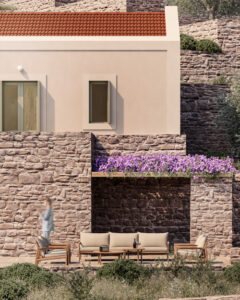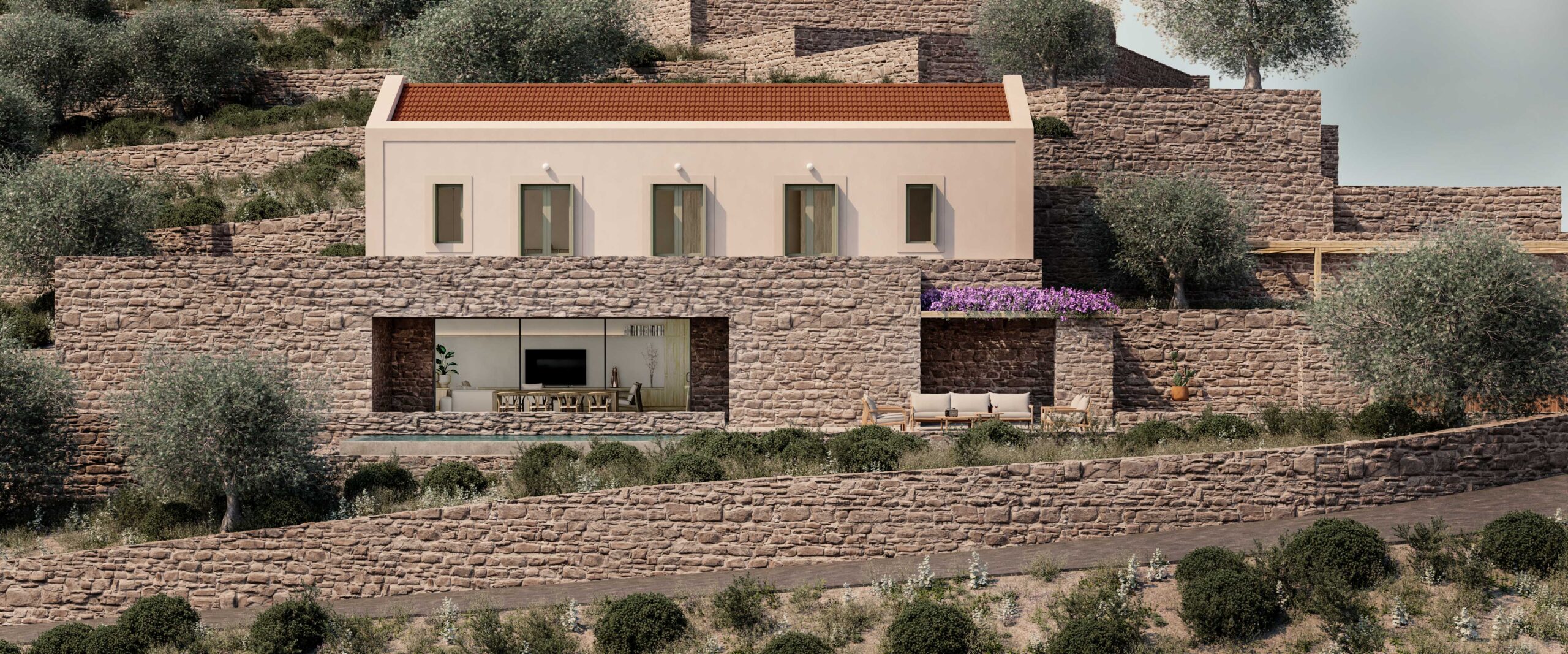A modern interpretation of tradition
This house was designed with absolute respect to the tradition of Karpathos, but also with the ambition to create a modern interpretation of the Karpathian house, connecting the past with the present and the future.
The location in Aperi, with its panoramic view of the sea, the wells and the mountain of Profitis Ilias, determined the layout of the building and its connection with the natural landscape. The main objective of the design is the harmonious integration of the building into the environment, with respect to the local scale and architectural tradition.
An elongated, whitewashed volume with a pitched roof, covered with the characteristic French tiles, rests on the stone volume of the ground floor, creating a harmonious connection with the landscape and referring to the traditional “big house”, as the house is called in Karpathos.
Inside, a wooden structure dominates the single space of the ground floor, unifying its different uses. It draws inspiration from the “Sofa”, the multifunctional element of the island’s architecture, which served as a sleeping area, storage and display of ornate utensils, but also as a setting for rituals, such as the dressing of the first daughter on her wedding day. The ‘Sofas’ was the centerpiece of the house, the backdrop for celebrations and feasts in the hall.
The courtyard was the central space of everyday life, as was traditionally the case in the Carpathian home, where it served as a gathering and celebration point. The pool, dressed in stone, is reminiscent of the traditional latches or cisterns, the tanks used to collect water. Aromatic plants – oregano, thyme, lavender and rose bushes – reinforce the connection with the island’s nature, while a century-old olive tree at the entrance symbolizes the root, continuity and memory of the place.
“Kanakara” is more than just a residence. It reflects the effort to keep alive the Carpathian house as an archetype, combining practicality with aesthetics. Through an architectural approach that respects and evolves the values of the place, it assumes the role of a proto-daughter that preserves the family legacy, offering a new look at the timeless relationship between man and place

